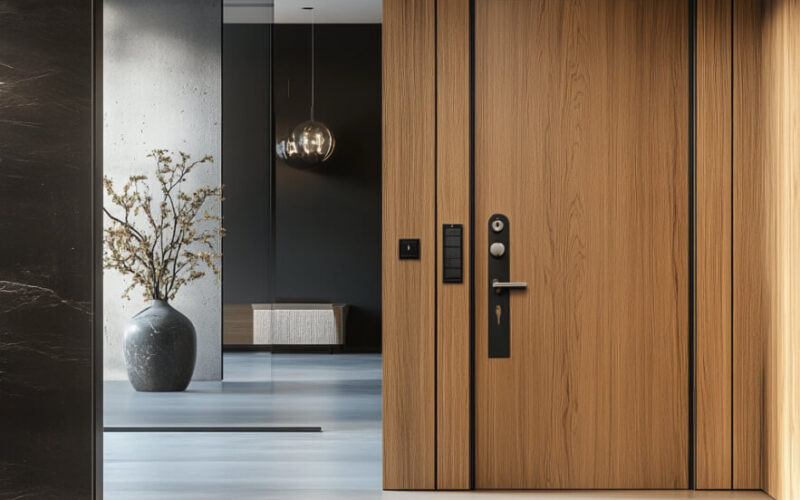Locks in a flat are not just an element of the door, but the main barrier between the dwelling and the outside world. Over time, even the most reliable mechanisms wear out, and some models lose relevance due to the emergence of new methods of opening. Ignoring the timely replacement of locks can lead to unpleasant consequences, so it is important to understand when it is worth thinking about security.
How can I determine the wear and tear of the lock mechanism?
Any lock is subject to natural wear and tear over time, even if it is used carefully. The main signs of obsolescence are tight turning of the key, delays in closing or opening the door, and grinding inside the mechanism. If you have to exert effort to turn the key, this may indicate wear on the pins or springs inside the cylinder.
Another sign is the key getting stuck in the keyhole or spinning idly. This indicates that the internal elements of the lock are loose or have begun to fail. Such problems should not be ignored: if the mechanism fails completely, the door may lock at the most inopportune moment.
Hidden signs that the lock has been tampered with
It is not always the case that an attempted burglary leaves obvious signs, especially if the perpetrators used lock picks or intelligent opening techniques. However, there are a few signs that may indicate that the lock has been manipulated:
- The key and cylinder show scratches or abrasion marks.
- The keyhole looks damaged or slightly deformed.
- After the last use, the mechanism has started to work worse than usual.
- There is backlash or abnormal resistance inside the lock when turning the key.
If you have suspicions, it is better not to risk it and replace the lock. Even if the burglary attempt was unsuccessful, intruders may have damaged the mechanism, making it less reliable.
Why is it a good idea to change the locks immediately after moving house?
When buying a flat or renting a home, many people underestimate the importance of changing the locks.
Even if the former owners or landlord appear to be honest people, there is no guarantee that someone does not have a duplicate key.
It is not uncommon for old tenants, neighbours, maintenance staff or even crooks to retain access to the property.
Changing a lock when moving house is not about being suspicious, but a sensible security measure. It is better to spend money on a new mechanism once than to face an unpleasant situation later. If replacement is not possible, it is worth at least installing additional security features such as armour plates or an additional internal lock.
How does changing a lock affect the security of a flat?
Modern locks have a more sophisticated security system than the models of yesteryear. They are better protected against bumping, drilling and key picking.
Installing a new lock automatically increases the security level of the apartment, especially if you choose a model with multi-layer protection.
Additionally, you can install additional protection elements:
- Bronenaclades – protect the cylinder mechanism from drilling and tearing out.
- Magnetic key locks – such models are more difficult to open with lock picks.
- Electronic locks – require a code or biometric access, eliminating the possibility of physical tampering.
Changing a lock is not only a matter of security, but also of convenience. Modern mechanisms work more gently, less often jam and allow for the integration of additional security features.
What locks are not recommended in 2025?
With the advent of new burglary techniques, some types of locks are losing relevance. In 2025, it is not recommended to install:
- Cylinder locks without bumping protection – they can be opened with an impact key in seconds.
- Old padlocks – do not provide the proper level of security and are easily bitten off with a bolt cutter.
- Cheap Chinese mechanisms with a plastic core – they wear out quickly and break easily even with a little effort.
- Single-row suvald locks without additional locks – they are opened by manipulative methods in a couple of minutes.
It is better to give preference to locks with certified protection and additional mechanisms of protection against intelligent tampering.
Что делать, если замок исправен, но вызывает сомнения?
Sometimes the lock works fine but seems unreliable. This could be due to an outdated model, an unsecured design, or a feeling that unauthorized people may have had access to the key. If this is the case, there are several solutions you can consider:
Install an additional lock. This will make it more difficult for burglars and increase the level of protection.
Change the core – sometimes it is enough to replace only the cylinder to increase the reliability of the mechanism.
Use additional means of protection: armor plates, reinforced door frames, night bolts.
If doubts about the reliability of the lock do not pass, you can replace it with a more modern mechanism. It is important to entrust the installation to a specialist, who will accurately perform the work and will not make mistakes.
Replacing the lock is a simple but important security measure. A timely updated mechanism and additional security solutions will help to avoid unpleasant situations and maintain peace of mind for the safety of your home.
On average, every 5-7 years, but if the lock has started to stick or is morally obsolete, it is better to replace it sooner.
Yes, you can install an armored lock, replace the cylinder mechanism, or add a second lock.
Look out for scratches around the well, play in the mechanism, and suspicious marks inside the lock
Locks with multi-layer security, magnetic keys or biometric access.

